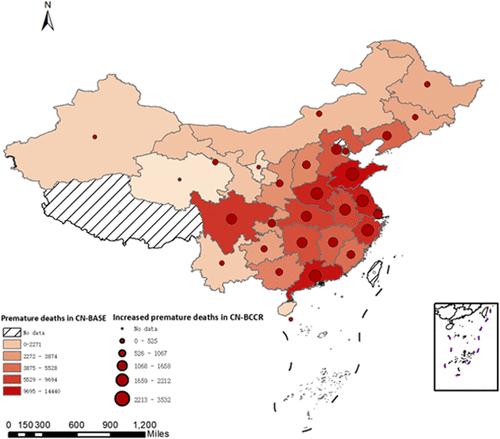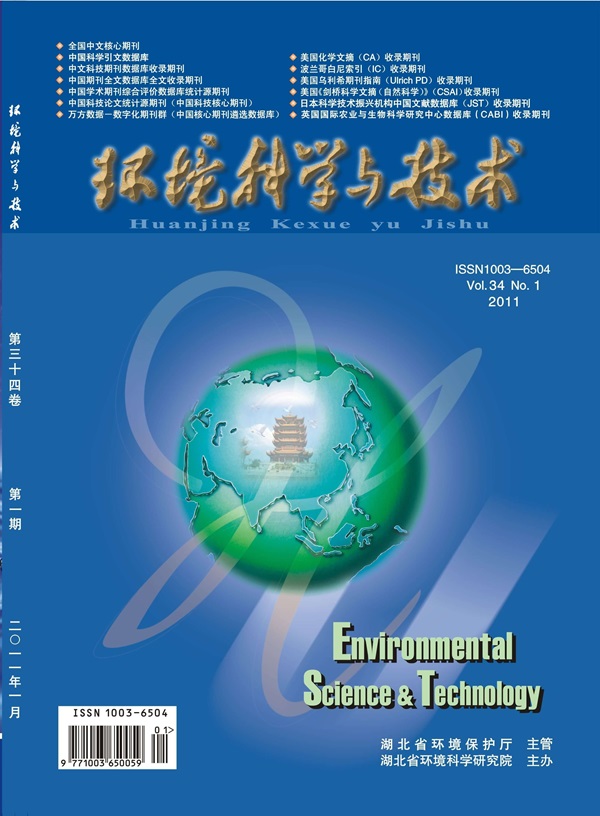Retrofitting Coal Power Units with Biomass and Coal Cofiring Intensifies Air Pollution and Health Risks
IF 10.8
1区 环境科学与生态学
Q1 ENGINEERING, ENVIRONMENTAL
引用次数: 0
Abstract
Retrofitting coal power units with biomass and coal cofiring technology provides a promising pathway toward low-carbon transition. However, such a retrofitting approach may also pose potential environmental and health risks, even aggravating regional disparities. Here, we propose a comprehensive framework to evaluate the associated risks of Biomass and Coal Cofiring Retrofit (BCCR) in China. We find that air pollutants such as SO2, PM2.5, and NOx will increase by an average of 27.9, 38.04, and 42.79% respectively compared to the scenario with no BCCR. The national-wide PM2.5 concentration-related premature mortalities in scenarios with BCCR are projected to increase by 23.53% on average in 2030. Moreover, the Highest-20% of provinces with higher health risks (also health vulnerable groups such as the elderly and children concentrated area) are 19 times greater than that in the Lowest-20% group. Results suggest that implementing a Targeted Pollution Control strategy for areas with higher health risks would be an economical and effective way to reduce the total pollutants emissions and mitigate the regional disparities in health risks. Our research proposes stringent pollution control measures on biomass and coal cofiring retrofit in advance in regions with the utmost necessity to facilitate a fair transition toward clean energy.

用生物质和燃煤技术改造煤电机组加剧了空气污染和健康风险
利用生物质和煤炭联合燃烧技术改造煤电机组为实现低碳转型提供了一条大有可为的途径。然而,这种改造方法也可能带来潜在的环境和健康风险,甚至加剧地区差异。在此,我们提出了一个综合框架来评估中国生物质和煤炭燃烧改造(BCCR)的相关风险。我们发现,与不进行生物质和煤炭燃烧改造的情景相比,二氧化硫、PM2.5 和氮氧化物等空气污染物将分别平均增加 27.9%、38.04% 和 42.79%。预计到 2030 年,在采用《生物多样性公约》的情景下,全国范围内与 PM2.5 浓度相关的过早死亡人数将平均增加 23.53%。此外,健康风险最高的 20% 省份(也包括老年人和儿童集中区等健康弱势群体)是健康风险最低的 20% 省份的 19 倍。研究结果表明,对健康风险较高的地区实施有针对性的污染控制策略,是减少污染物排放总量、缓解健康风险地区差异的经济而有效的方法。我们的研究建议在最有必要的地区提前对生物质和煤炭联合燃烧改造采取严格的污染控制措施,以促进向清洁能源的公平过渡。
本文章由计算机程序翻译,如有差异,请以英文原文为准。
求助全文
约1分钟内获得全文
求助全文
来源期刊

环境科学与技术
环境科学-工程:环境
CiteScore
17.50
自引率
9.60%
发文量
12359
审稿时长
2.8 months
期刊介绍:
Environmental Science & Technology (ES&T) is a co-sponsored academic and technical magazine by the Hubei Provincial Environmental Protection Bureau and the Hubei Provincial Academy of Environmental Sciences.
Environmental Science & Technology (ES&T) holds the status of Chinese core journals, scientific papers source journals of China, Chinese Science Citation Database source journals, and Chinese Academic Journal Comprehensive Evaluation Database source journals. This publication focuses on the academic field of environmental protection, featuring articles related to environmental protection and technical advancements.
 求助内容:
求助内容: 应助结果提醒方式:
应助结果提醒方式:


